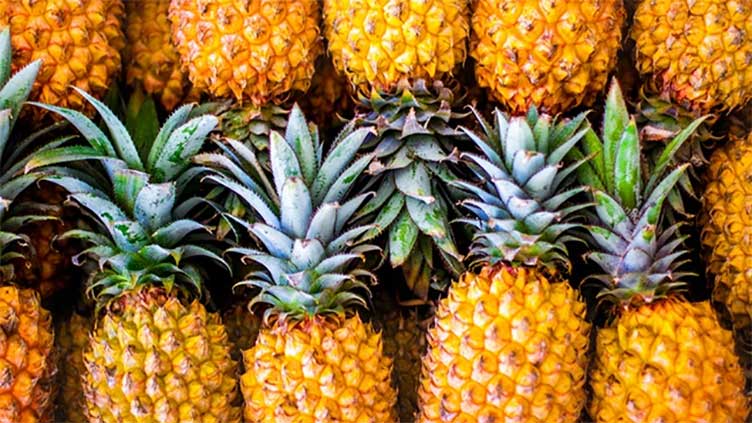Is pineapple good for diabetes?

Is pineapple good for diabetes?
ISLAMABAD, (Online) - Pineapple can affect blood sugar more than some other fruits, but a person with diabetes can still incorporate it into a healthful meal plan.
Fruit contains carbohydrates and so can raise blood glucose levels. However, the American Diabetes Association (ADA) say that people with diabetes benefit from including fruit in their diets.
Fruits are an excellent source of nutrients, including dietary fiber, vitamins, and minerals.
This article discusses how pineapple and other fruits can affect diabetes and how best to incorporate pineapple into a dietary plan.
Pineapple and diabetes
Raw pineapple has a medium GI score, so people should eat it in moderation.
Most fruits have low glycemic index (GI) scores, meaning that they impact blood sugar levels less than other foods.
These scores tend to be low because fruit contains fructose and fiber, which help the body digest carbohydrates more slowly, leading to more stable blood sugar levels over time.
Pineapples, however, have a medium GI score, which means that they can have more of an effect on blood glucose than other fruits.
General GI categories are as follows:
• Low-GI foods have scores under 55.
• Medium-GI foods have scores between 56 and 69.
• High-GI foods have scores of 70 or above.
Raw pineapple has a score of 66, making it a medium-GI food.
Eat pineapple in moderation, and pair it with protein or healthful fat — such as from nuts, seeds, nut butter, or avocado — to limit the fruit’s effects on blood sugar levels.
Other medium-GI fruits include melons and some dried fruits, such as dates, raisins, and sweetened cranberries.
Like other foods, the GI of pineapple can vary, depending on what a person eats with it. When someone couples fibrous carbohydrates with proteins and healthful fats, it will deter overeating, help them feel full for longer, and reduce any spike in blood sugar.
Other factors that affect the GI of pineapple include:
• ripeness, with a more ripe fruit having a higher GI score
• preparation, because fruit juice has a higher score than raw fruit, for example
• whether it is canned or raw, as canned pineapple with added sugar has a higher score
Pineapple is a good source of vitamin C and manganese. It also contains fiber, vitamin A, and B vitamins, as well as a compound called bromelain, which has many reported health benefits. These factors make pineapple a healthful addition to a diabetes-friendly diet.
How to eat pineapple
The most healthful options are raw or frozen pineapple.
Canned, cupped, or processed pineapple often contains added sugar, especially when the fruit is in syrup. If canned pineapple is the only option available, try to find it canned in water, rather than syrup.
Choose raw or frozen pineapple over pineapple juice or dried pineapple, which generally contain added sugar and so can cause spikes in blood glucose levels.
To limit the impact on blood sugar levels, eat pineapple in moderation and pair it with protein or healthful fat to minimize the total GI value of the meal.
Try pineapple as a dessert after eating low-GI foods, such as:
• brown rice
• barley
• whole-grain bread
• whole-grain pasta
• beans
• rolled oats
• lean proteins
• healthful fats
The simplest way to prepare the fruit is to serve it raw, as a side dish or dessert. Or, try grilling it and including it with the main meal, as in many Asian and island cuisines.
Diabetes and other fruits
A person with diabetes can include strawberries in a healthful diet.
People with diabetes can incorporate a wide variety of fruits into their meal plans and reap the many health benefits. Each fruit contains its own vitamin and nutrient profile.
The ADA estimate that:
• About half a cup of frozen or canned fruit contains 15 grams (g) of carbohydrates.
• Keeping this in mind, a serving of berries or melon tends to be between three-quarters of a cup and 1 cup.
• Fruit juices contain roughly 15 g of carbohydrates per third- or half-cup, depending on the juice.
Doctors recommend that people eat whole fruits, rather than juice, because a piece of fruit tends to be more filling and have a lower GI score.
Whole fruits are also more healthful sources of fiber, vitamins, and minerals.


